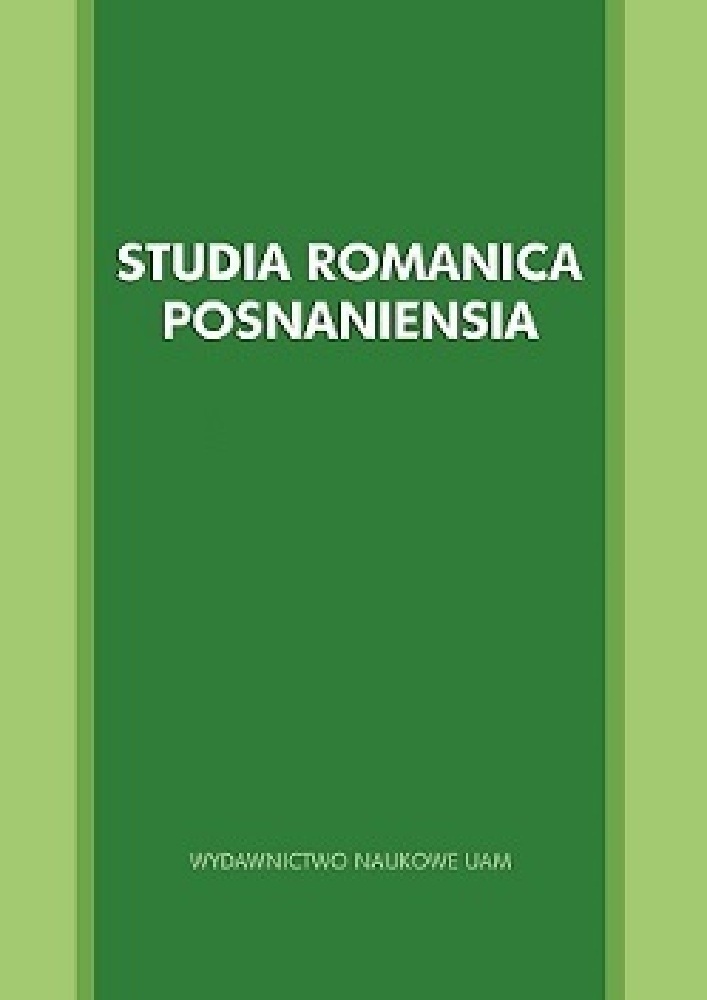Abstrakt
Journalists play a crucial role in the reporting of events, especially in tragic circumstances, such as terrorist attacks. An all-news network must maintain a dramatic tension throughout the events, sometimes for long hours, although the reporters dispatched to the site are not always able to provide new elements. On the basis of the partial information transmitted from various sources, the on-site journalists have to develop a coherent story that captures the audience’s attention. This explains why the staging of the information is not only based on the emotions of the witnesses and on-site reporters, but also on narrative stereotypes or social scripts, leading to a form of fictionalization. Our study, which uses the methods of discourse analysis, takes into account the emotional lexicon and the way in which the interaction between the various protagonists of the journalistic discourse shapes the televisual macronarrative. It is based on a transcribed corpus of two hours of live news broadcast by BFM, a French news channel, during the attacks that took place in Paris on November 13, 2015.
Bibliografia
Adam, J. M. (1996). Le récit (5e éd.). Paris : Presses Universitaires de France. Que sais-je ?
Arquembourg, J. (2011). L’événement et les médias : les récits médiatiques des tsunamis et les débats publics (1755-2004). Paris : Archives contemporaines.
Baudrillard, J. (1991). La guerre du Golfe n’a pas eu lieu. Paris : Galilée.
Charaudeau, P. (2000). La pathémisation à la télévision comme stratégie d’authenticité. In Les émotions dans les interactions. Lyon : Presse Universitaire de Lyon.
Labov, W. (1997). Some Further Steps in Narrative Analysis. Journal of https://doi.org/10.1075/jnlh.7.49som
Lits, M. (2012). Quel futur pour le récit médiatique ? Questions de communication, 21.
Longrée, D. & Mellet, S. (2013). Le motif : une unité phraséologique englobante ? Étendre le champ de la phraséologie de la langue au discours. Langages, 189, pp. 65-79. Retrieved from https://doi.org/10.3917/lang.189.0065
Plantin, C. (2011). Les bonnes raisons des émotions. Principes et méthode pour l’étude du discours émotionné. Berne : Peter Lang. Retrieved from https://doi.org/10.3726/978-3-0352-0070-6
Rimé, B. (2009). Le partage social des émotions. Paris : Presses Universitaires de France. Retrieved from https://doi.org/10.3917/puf.mosco.2009.01
Salmon, Ch. (2007). Storytelling. La machine à fabriquer les images et à formater les esprits. Paris : La Découverte.
Scherer, K. R. (1984). Les émotions : Fonctions et composantes. Cahiers de Psychologie Cognitive, 4, pp. 9-39.
Scherer, K. R. (1993). Studying the emotion-antecedent appraisal process: An expert system approach. Cognition and Emotion, 7, pp. 1-41. Retrieved from https://doi.org/10.1080/02699939308409192 ; https://doi.org/10.1080/02699939308409174
Scherer, K. R. (2001). Appraisal considered as a process of multi-level sequential checking. In K. R. Scherer, A. Schorr & T. Johnstone (éds), Appraisal processes in emotion: Theory, Methods, Research (pp. 92-120). New York & Oxford : Oxford University Press.
Virilio, P. (1991). L’écran du désert. Chroniques de guerre. Paris : Galilée.
Licencja
- Autor oświadcza, że przysługują mu osobiste i majątkowe prawa autorskie do Utworu oraz że nie są one ograniczone w zakresie objętym niniejszą Umową, oraz że utwór jest dziełem oryginalnym i nie narusza majątkowych lub osobistych praw autorskich innych osób.
- Autor udziela Uniwersytetowi im. Adama Mickiewicza w Poznaniu niewyłącznej i nieodpłatnej licencji na korzystanie z Utworu bez ograniczeń terytorialnych i przez czas nieokreślony na następujących polach eksploatacji:
2.1. wytwarzanie określoną techniką egzemplarzy Utworu, w tym techniką drukarską, reprograficzną, zapisu magnetycznego oraz techniką cyfrową;
2.2. wprowadzanie do obrotu, użyczenie lub najem oryginału albo egzemplarzy Utworu;
2.3. publiczne wykonanie, wystawienie, wyświetlenie, odtworzenie oraz nadawanie i reemitowanie, a także publiczne udostępnianie Utworu w taki sposób, aby każdy mógł mieć do niego dostęp w miejscu i w czasie przez siebie wybranym;
2.4. włączenie Utworu w skład utworu zbiorowego;
2.5. wprowadzanie Utworu w postacie elektronicznej na platformy elektroniczne lub inne wprowadzanie Utworu w postaci elektronicznej do Internetu, Intranetu, Extranetu lub innej sieci;
2.6. rozpowszechnianie Utworu w postaci elektronicznej w Internecie, Intranecie, Extranetu lub innej sieci, w pracy zbiorowej jak również samodzielnie;
2.7. udostępnianie Utworu w wersji elektronicznej w taki sposób, by każdy mógł mieć do niego dostęp w miejscu i w czasie przez siebie wybranym, w szczególności za pośrednictwem Internetu, Intranetu, Extranetu lin innej sieci;
2.8. udostępnianie Utworu zgodnie z wzorcem licencji Attribution-NonCommercial-ShareAlike 4.0 International (CC BY-NC-SA 4.0) lub innej wersji językowej tej licencji lub którejkolwiek późniejszej wersji tej licencji, opublikowanej przez organizację Creative Commons. - Autor zezwala Uniwersytetowi im. Adama Mickiewicza w Poznaniu na:
3.1. nieodpłatne korzystanie i rozporządzanie prawami do opracowań Utworu i tymi opracowaniami.
3.2. wysyłanie metadanych Utworu oraz Utworu do komercyjnych i niekomercyjnych baz danych indeksujących czasopisma. - Autor upoważnia i zobowiązuje Uniwersytet im. Adama Mickiewicza w Poznaniu do udzielania osobom trzecim dalszych licencji (sublicencji) do Utworu oraz do innych materiałów, w tym utworów zależnych lub opracowań zawierających lub powstałych w oparciu o Utwór, przy czym postanowienia takich sublicencji będą tożsame z wzorcem licencji Attribution-NonCommercial-ShareAlike 4.0 International (CC BY-NC-SA 4.0) lub innej wersji językowej tej licencji lub którejkolwiek późniejszej wersji tej licencji, opublikowanej przez organizację Creative Commons Tym samym uprawnia wszystkich zainteresowanych do korzystania z utworu wyłącznie w celach niekomercyjnych pod następującymi warunkami:
4.1. uznanie autorstwa czyli obowiązek podania wraz z rozpowszechnionym utworem informacji, o autorstwie tytule, źródle (odnośniki do oryginalnego utworu, doi) oraz samej licencji;
4.2. na tych samych warunkach, wolno rozpowszechniać utwory zależne jedynie na licencji identycznej to tej, na jakiej udostępniono utwór oryginalny. - Uniwersytet im. Adama Mickiewicza w Poznaniu jest zobowiązany do:
5.1. udostępniania Utworu w taki sposób, aby każdy mógł mieć do niego dostęp w miejscu i w czasie przez siebie wybranym bez ograniczeń technicznych;
5.2. poprawnego informowania osób, którym Utwór będzie udostępniany o udzielonych im sublicencjach w sposób umożliwiający odbiorcom zapoznanie się z nimi.
Pozostałe postanowienia
- Uniwersytet im. Adama Mickiewicza w Poznaniu zachowuje prawo do czasopisma jako całości (układ, forma graficzna, tytuł, projekt okładki, logo itp.).
